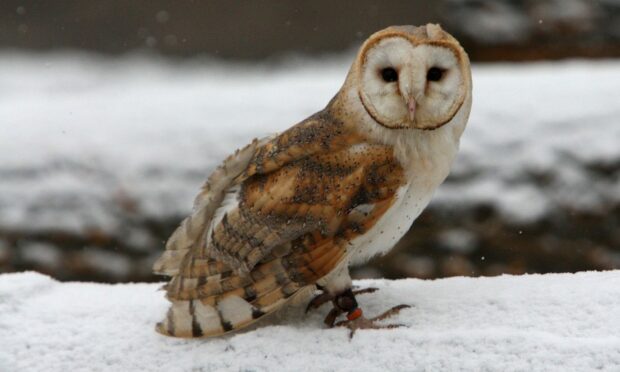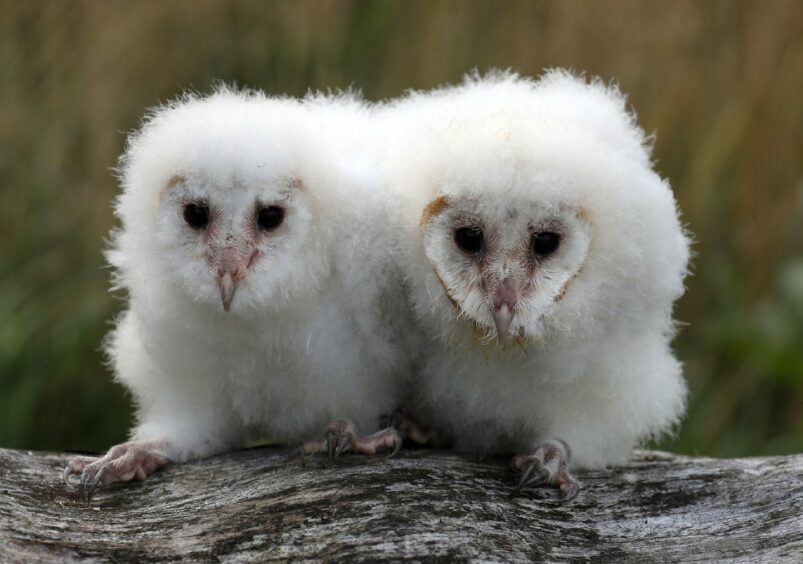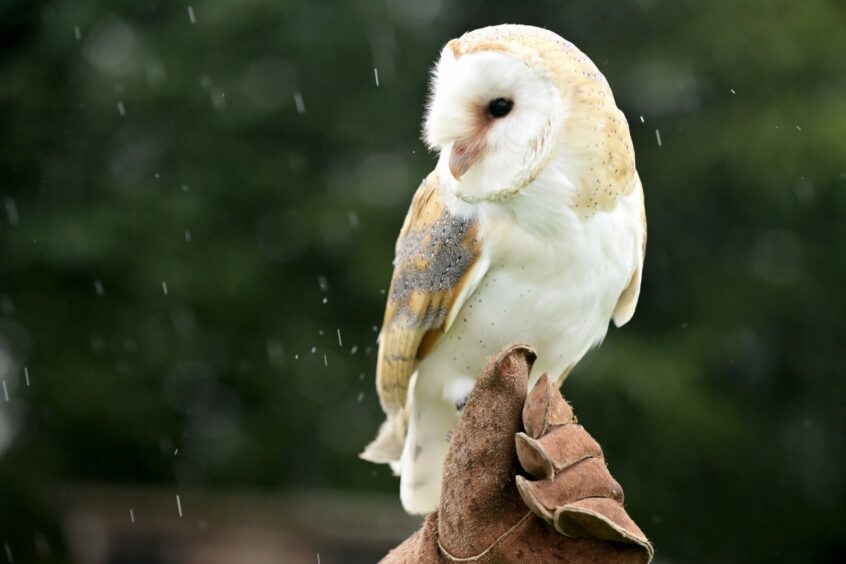On ghostly white wings, the barn owl floated over the rushes by the edge of the damp field margin, hovering momentarily before plunging to the ground.
I lost sight of the owl in among the tangle of vegetation, but it then took to the air again in the gathering light, and swerved, bobbed, and hovered as if held aloft by invisible puppeteer strings.
It was magical to watch, a silver spirit of the dawn that methodically covered the ground in search of field voles.
The barn owl swooped back and forth for several more minutes, before undulating over the top of a beech hedge and disappearing.
The sight of the barn owl spurred my mind into reflection.
Barn owls detest long, cold snowy periods because it becomes a struggle to find small rodents at such times.
I recall a few winters ago, when there was more snow cover, watching a buzzard swoop low past, carrying a dead barn owl in its talons.
Rather than having caught it, I imagine the buzzard had scavenged the carcass of the owl after it had succumbed from hunger because of the snow.
Mild winter
With this past winter being mild, I suspect my local barn owl population is doing well.
One might think this would herald a bumper breeding season ahead, but barn owl ecology is complicated because of their dependence on field voles, which undergo regular four-yearly population cycles of boom and bust.
Thus, if the coming season is a poor one for field voles, then the reproductive success of barn owls will dramatically decline.
As such, barn owls will try and make hay when the sun shines, and in a good vole year, will sometimes raise two broods of chicks over the course of a spring and summer.
Barn owls are localised birds in Scotland because they are on the north-western fringes of a global range that stretches across much of Europe and Asia.
They prefer low-lying ground in central and southern areas of Scotland, although the distribution does spread to other parts, especially Aberdeenshire, along the Moray Firth coast and Argyll.
The barn owl is sometimes known as the ‘screech owl’ because of its shrieking call, and it was the owl that screamed in Shakespeare’s Macbeth when ‘the deed’ was done.
One can easily imagine how the ghostly, white form of a barn and owl and its accompanying spine-tingling screech would have caused great trepidation in times past.
One of the main constraining factors on the barn owl population in recent decades has been the loss of suitable nesting sites due to old farm buildings being refurbished or demolished, and hollow trees blowing down in strong winds or being felled for health and safety reasons.
To rectify this, there are initiatives around Scotland to erect nest boxes to encourage them to breed.
The barn owl may also benefit from climate change in the future through reduced snow cover, and the opening-up of new areas of ground in higher altitude areas that formerly were not suitable for them.












